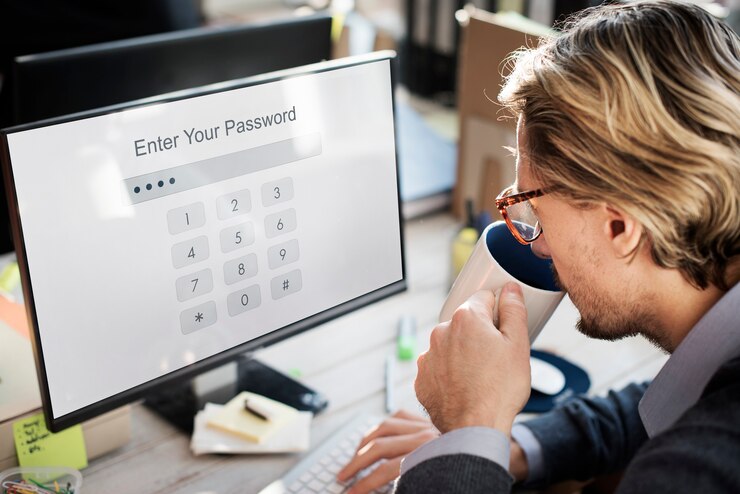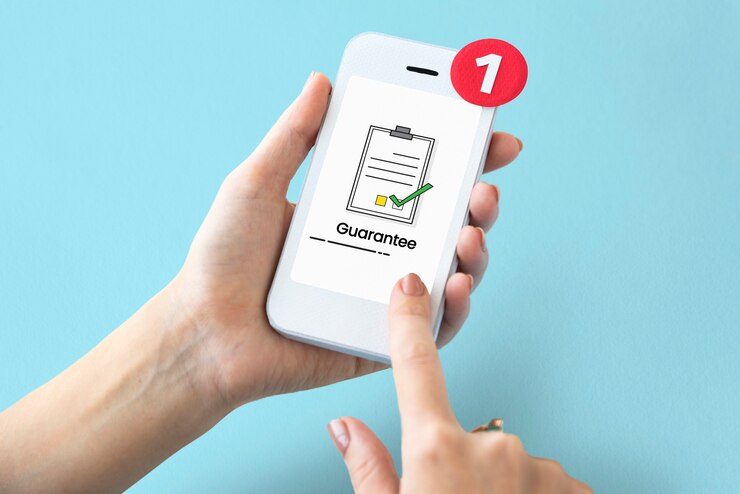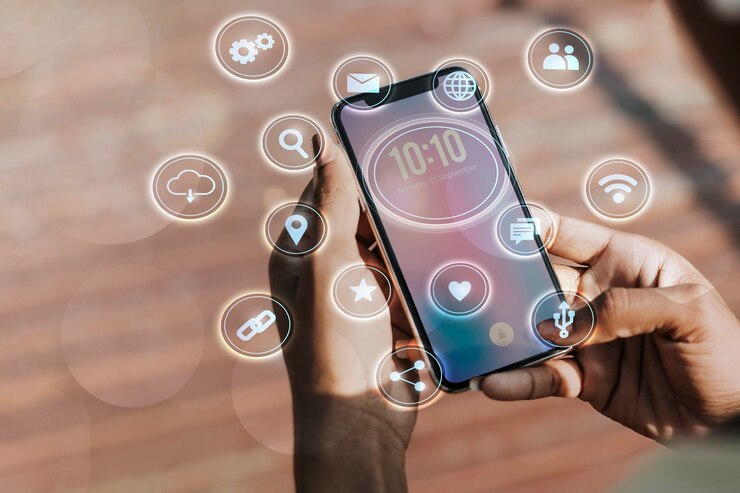Opt-out of data sharing is the correct option for the question of which of the following safety and privacy features is not included in a p2p app or service. Now let’s see why this is the only correct option for the question.
In the realm of contemporary digital interactions, peer-to-peer (P2P) applications and services are seamlessly woven into the fabric of our daily existence.
These tools facilitate the exchange of files and the flow of conversations. Yet, amidst this seamless ease, it remains imperative to consider the security and privacy dimensions that these platforms offer.
Within this discourse, we shall scrutinize the pivotal elements of privacy and security that oft pervade P2P applications while shedding light on any potential vulnerabilities.
End-To-End Encryption

End-to-end encryption, acknowledged as E2EE, stands as a paramount bastion of communication security. It assures that the purview of messages lies exclusively with the sender.
Data covered in encryption at the sender’s terminus only can be unveiled at the receiver’s end. Each user wields an exclusive set of public and private keys.
Employing the recipient’s public key, an encryption missive embarks on its journey, to be subsequently unveiled by the recipient’s private key. This implies that comprehension is reserved solely for the intended receiver.
Instances of E2EE’s application manifest in messaging, video conferencing, and electronic mail services, as exemplified by eminent platforms like WhatsApp, Signal, and Telegram.
E2EE bequeaths several merits. It upholds the sanctity of communication by thwarting any third-party overtures, particularly during pivotal dialogues. Through the encryption of messages via the recipient’s public key, it erects a formidable barrier against potential interlopers. Furthermore, it aids enterprises in adhering to data protection statutes akin to the GDPR.
Two-Factor Authentication (2FA)

This constitutes a vital citadel in security architecture, necessitating users to furnish two distinct authentication factors to affirm their identity. You know which is the correct option for ‘which of the following safety and privacy features is not included in a p2p app or service. But two-face authentication is one of the safest security phases.
Even if one facet of authentication comptonization, therefore this significantly augments the hurdle for potential assailants seeking access to user accounts.
The trinity of 2FA criteria encompasses knowledge, possession, and inherent, each entailing a specific piece of information that eludes misplacement or pilferage.
2FA implementation spans diverse modalities. Some prevalent methodologies encompass:
SMS-Based 2FA

The user must furnish a one-time passcode (OTP) in tandem with their password during login, transmitted via SMS text. Application-based authentication: The user harnesses a mobile authenticator app to generate an OTP. Which they must couple with their password for ingress.
This embodies the essence of two-factor authentication (2FA). Hardware-basis keys 2FA: To gain entry, the user must insert a tangible key into their device and input a PIN code.
By diminishing the prospect of account compromise, 2FA emerges as a recommended security panacea for fortifying an array of accounts, be it electronic mail, social media, banking, or professional accounts.
In mandating both authentication factors for user accounts, 2FA bestows the virtue of height for security. Thereby abating the peril of deceitful machinations encompassing illicit transactions and identity usurpation.
Safety And Privacy Features In The P2P App or Services

The P2P apps and services find requisite validation under data protection edicts such as the GDPR. Underscoring their stature as a highly advocated security proposition for all users to safeguard their sanctum of privacy and security.
Secure Authentication Techniques:
Peer-to-peer (P2P) applications offer an extensive repertoire of impregnable authentication methodologies. The following represent some of the most lauded and efficacious techniques:
Two-factor authentication (2FA):
The foils potential interlopers by complicating unauthorized entry and compelling users to furnish two discrete authentication factors upon signing in.
Public-Key Cryptography:
Public-key cryptography entails the utilization of distinct public and private keys for encryption and decryption, guaranteeing that communications remain decipherable solely by the intended recipient. Device fingerprinting identifies a singular device by its idiosyncratic attributes.
Aligning the device’s fingerprint with an existing record in the P2P app’s repository serves to authenticate users. Behavioral biometrics delves into the study of individual user interaction patterns with a computer, spanning typing cadence, mouse movements, and swiping gestures. This serves as a yardstick for authenticating individuals by juxtaposing their behavior against a pre-established benchmark.
Integrate Supplementary Security Fortifications:

In the realm of P2P applications, it is imperative to integrate supplementary security fortifications alongside these authentication strategies. These encompass data encryption and stalwart coding practices. Hence recurrent security assessments to protect user data and accounts from any unauthorized ingress.
The measures stand as vanguards of the app’s security, ameliorating the likelihood of vulnerabilities and thereby augmenting user security.
Further suggestions to buttress P2P applications encompass the cultivation of robust passphrases, the deployment of 2FA for account safekeeping, circumspection in divulging information, renouncing of interaction with dubious hyperlinks, and regular application of software updates. The embrace of reputable P2P applications boasts an illustrious security pedigree.
Data Masking:
This strategy embodies a paradigm wherein sensitive data undergoes substitution with fictitious counterparts. Data masking also safeguards against any breach, rendering any compromised information nugatory to malevolent actors. Data masking is the supporting answer of which of the following safety and privacy features is not included in a p2p app or service.
| In-App Privacy Settings: A gamut of in-app privacy configurations empowers users to tailor their privacy predilections. This entails the capacity to govern who may peruse one’s profile, messages, and shared content. |
Device Verification:

This validation exercise ensures that the app is exclusively accessible via trusted devices, forestalling any authorization ingress from unfamiliar or compromised apparatus.
| Secure Payment Gateways: For applications entailing fiscal transactions, the presence of robust payment gateways stands as a sine qua non. This serves as a bulwark, shielding users’ financial particulars from any untoward appropriation. |
Stout Malware Deterrence:
Vigorous protection against pernicious software stands as an imperious bastion, safeguarding users against any encroachment via malevolent applications.
Scheduled Security Audits: Periodic security audits, orchestrated by the app provider, serve as sentinel measures for identifying and amending any vulnerabilities. This proactive stance cements the app’s perennial security.
Geo-Location Privacy:
Privacy attributes pertaining to geo-location give users the reins over who may peruse their geographic information. This assumes heightened significance in applications featuring real-time location disclosure.
Gentle Reminders

End-to-end encryption, though highly secure, is not impervious to breaches. Two-factor authentication stands as a linchpin for heightened security, introducing complexity to any unauthorized ingress.
In instances of suspected breaches, promptly alter passwords and seek recourse from the app provider’s support apparatus. Additionally, vigilance in reviewing and updating privacy settings, especially in the wake of app updates or any anomalous activity, is paramount.
While confidence in app providers to conduct thorough security audits is merited, staying apprised of their methodologies is equally incumbent.
Conclusion

While P2P applications bestow an array of safety and privacy features, it behooves us to acknowledge that no system is invulnerable in its entirety. Guess you get the ideas about which of the following safety and privacy features is not included in a p2p app or service. As end-users, you can maintain vigilance regarding our own digital security holds equal importance.
Through a discerning grasp of the safety protocols in place, we empower ourselves to make judicious choices regarding the applications we opt to embrace.
Additional:
- Google Celebrates Its 25th Birthday Today With A ‘G25gle’ DoodleGoogle
- Navigating The Truth: Understanding The Importance Of Geolocation Tools
- Elon Musk Confirms The Name Of His Third Child With Singer Grimes; But What Does It Mean?

